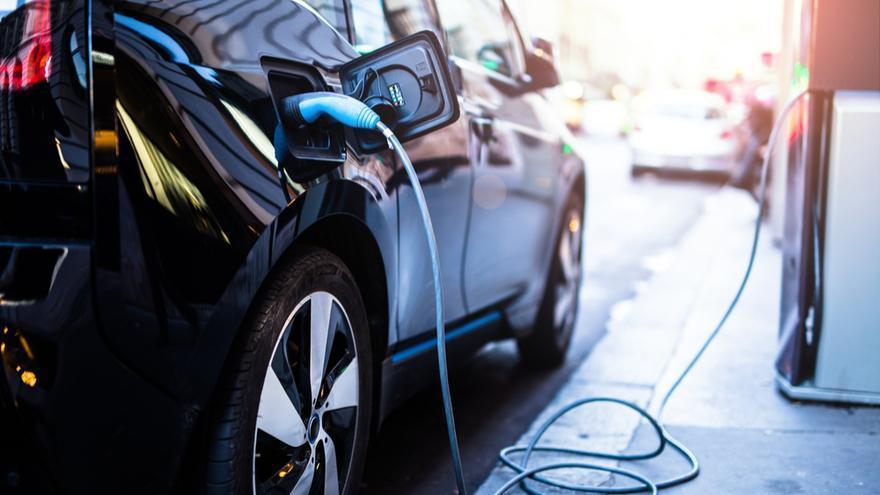Used-car prices, particularly EVs & hybrids, remain well above year-ago levels

Retail prices on 1- to 5-year-old used cars last month showed some moderation from February, but still remain more than 30% higher than year-ago levels, according to an analysis from iSeeCars.com, which said the runup is particularly steep for fuel-efficient models and electrics.
The company examined 1.8 million transaction of used vehicles ages 1 to 5 in March, and found their average price was $34,429.
While that was bit of relief from the $35,029 average price tag in February, it was still 30.4% higher than March 2021, iSeeCars said.
In February, used-car prices were up 35% year-over-year.
Given the high cost of fuel, the price pain is particularly evident among more fuel-friendly segments like hybrids, where prices were up 40.5% year-over-year in March, according to the iSeeCars data.
Likewise, electric vehicle prices were up 36.3% last month.
Those compare to a 29.6% increase for non-hybrid/electric vehicles.
What’s more, the used vehicle with the sharpest price jump last month was the Hyundai Sonata Hybrid, whose prices were up 63.9% from March 2021, iSeeCars said. Another hybrid, the Toyota Prius, also cracked the top 10 with a 45.1% price increase, putting it at No. 6 on the iSeeCars list of 10 biggest price increases.
“Hybrid vehicles are in high demand due to soaring gas prices, with the hybrid category as a whole increasing in price by 40.5 percent,” iSeeCars executive analyst Karl Brauer said in the analysis. “Affordable transportation has seen a surge in demand in the wake of heightened used-car prices, and these hybrid cars are less expensive than the average used car.”
The top 10 list also included two electrics: the Nissan LEAF in third with a 49.2% jump and the Tesla Model S, in ninth with a 42.8% price increase.
“The Nissan LEAF’s price increase is likely due to the surge in gas prices as well as the heightened desirability for the redesigned 2018 model, which benefited from increased range and is now coming off lease to enter the used-car market,” said Brauer.
“Meanwhile, demand for used versions of the Model S waned in recent months as consumers embraced the more affordable Model 3 and the Model X SUV,” he said. “But with the recent upgrades to the Model S, plus the new ‘Plaid’ model and higher fuel prices, demand has increased for the Model S.”
And while there were also six internal-combustion-engine vehicles on the iSeeCars list, five were small cars.
“The Kia Rio, Chevrolet Spark and Mitsubishi Mirage subcompact cars are among the lowest-cost vehicles on the market, while the Kia Forte and Kia Soul are among the lowest-priced options in their respective vehicle classes,” Brauer said of those models making the top 10. “These vehicles, priced at $20,000 and below, are attainable for new drivers and those looking for affordable transportation, even after their large increase in price over the past year.”
On the wholesale side of the used-car market, values declined sequentially for the second consecutive month, though they were still considerably higher than year-ago levels
And the slowdown appears far from over, according to Cox Automotive, which said earlier this month that its Manheim Used Vehicle Vehicle Index came in at 223.5 in March.
While up 24.8% year-over-year on a mix-, mileage- and seasonally adjusted basis, that reading is 3.3% softer than February’s.
Without the seasonal adjustment, prices were up 0.6% from February and 23.2% from March 2021.
Jesse Toprak, chief analyst at Autonomy, an EV subscription provider, provided some reaction to that sequential decline in emailed comments.
“After reaching all-time record levels, industry-average used-car prices have stabilized and even posted small a decline in the last couple of months. However, this minor decline is largely caused by the drop in the price of gas guzzlers such as full-size SUVs,” Toprak said. “Market prices for fuel-efficient vehicles, particularly EVs, remain the same if not even higher today.
“Supply for used EVs is still extremely low and prices for this category are not likely to drop anytime soon,” he said. “When we add in the element of historically high gas prices fueling unrelenting consumer demand, we don’t anticipate any easing in the prices of EVs for at least the next year, especially for very high demand models such as the Tesla 3.”
Going back to the Manheim analysis from earlier this month, it was expected that April could be the highest price point of the year before further downturn comes, Cox said.
“We anticipate the second quarter — and particularly April — will be the strongest part of the year for used-vehicle sales and values,” Cox Automotive chief economist Jonathan Smoke said in a news release from earlier this month.
“Once we get through the spring, we expect demand to wane somewhat and should see closer to normal price depreciation patterns for the rest of the year. That said, we think our call for not expecting a price crash in 2022 — just depreciation — is still very likely given continued challenges with supply conditions,” Smoke said.
Cox provided an update Tuesday on how wholesale prices fared in the first half of April. The company said wholesale values in the first half of the month — adjusted for mix, mileage and seasonality — were 1.0% softer than the entire month of March, but ahead of year-ago levels.
Specifically, the mid-month reading of the Manheim Used Vehicle Value Index was 221.4, a 14.1% year-over-year uptick. In a tweet Tuesday, Smoke emphasized the 1.0% sequential decline was entirely due to seasonality.
Unadjusted, prices were up 3% from March and 16.4% from April 2021.

 View The Latest Edition
View The Latest Edition

